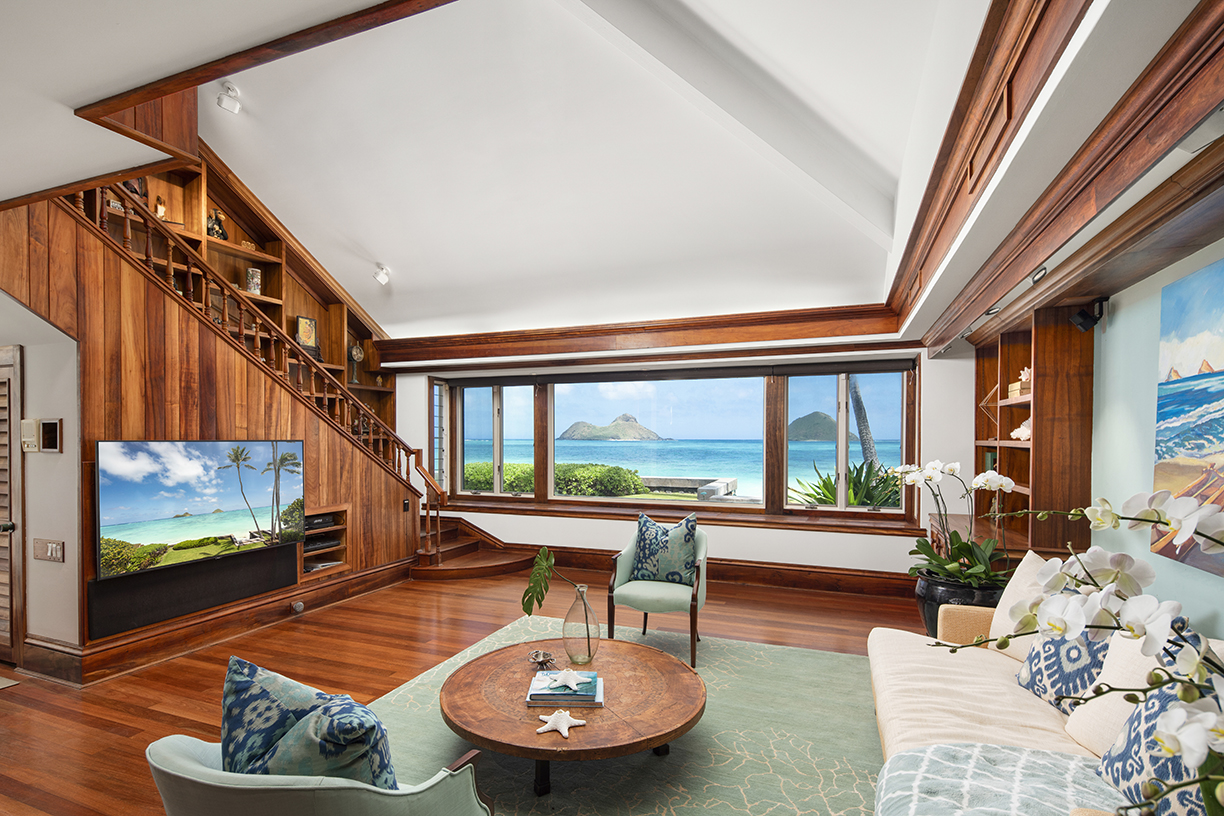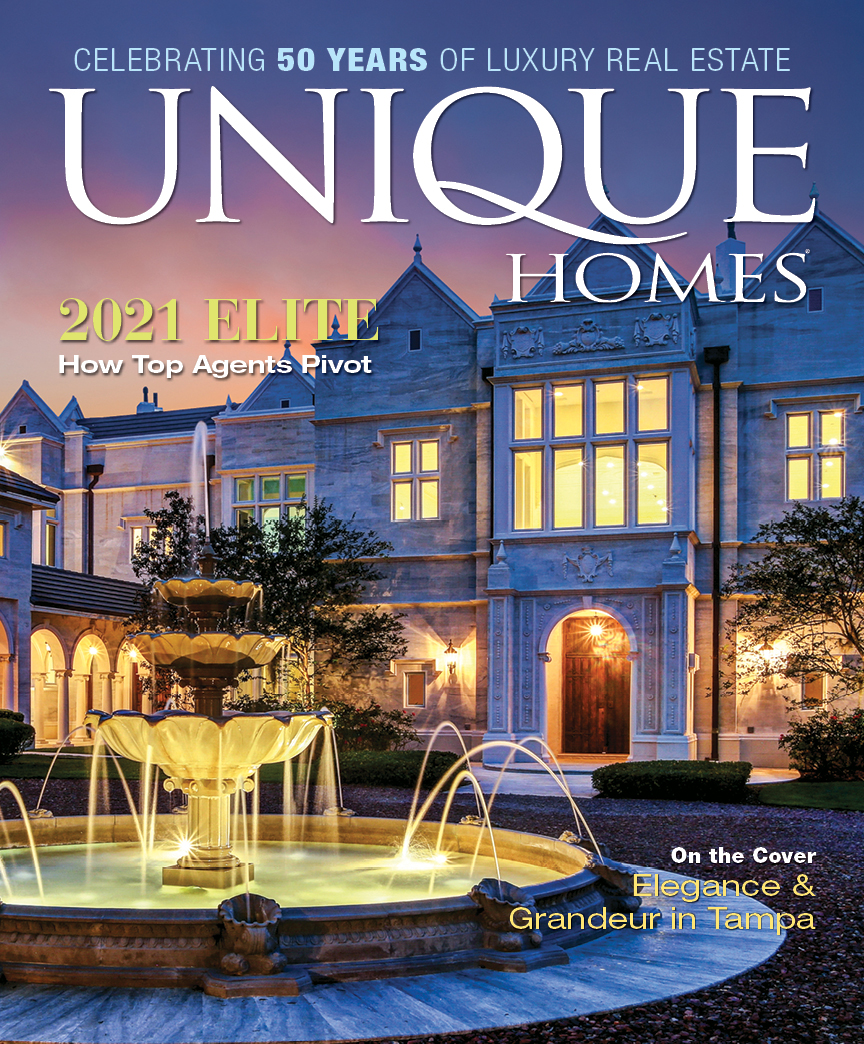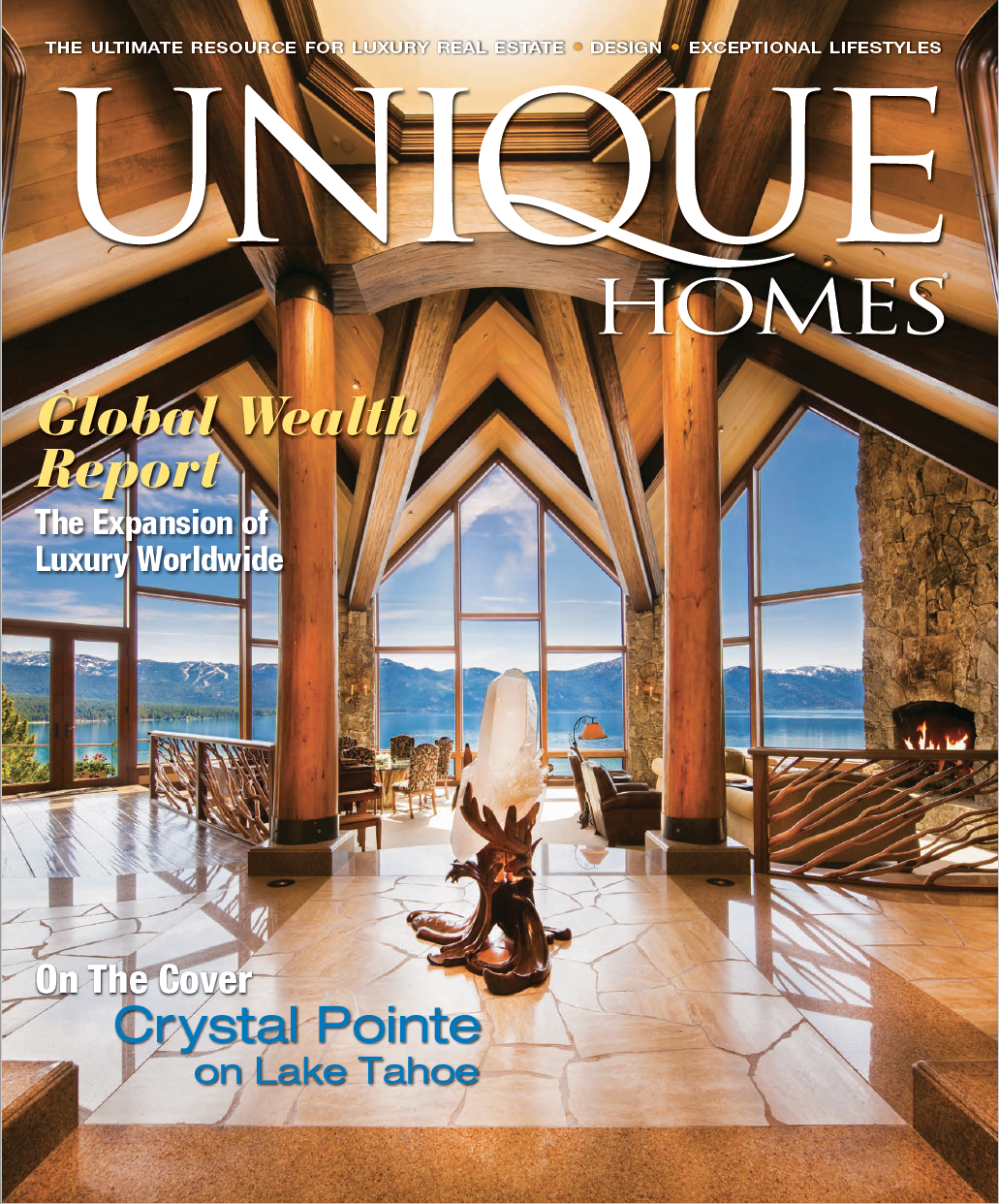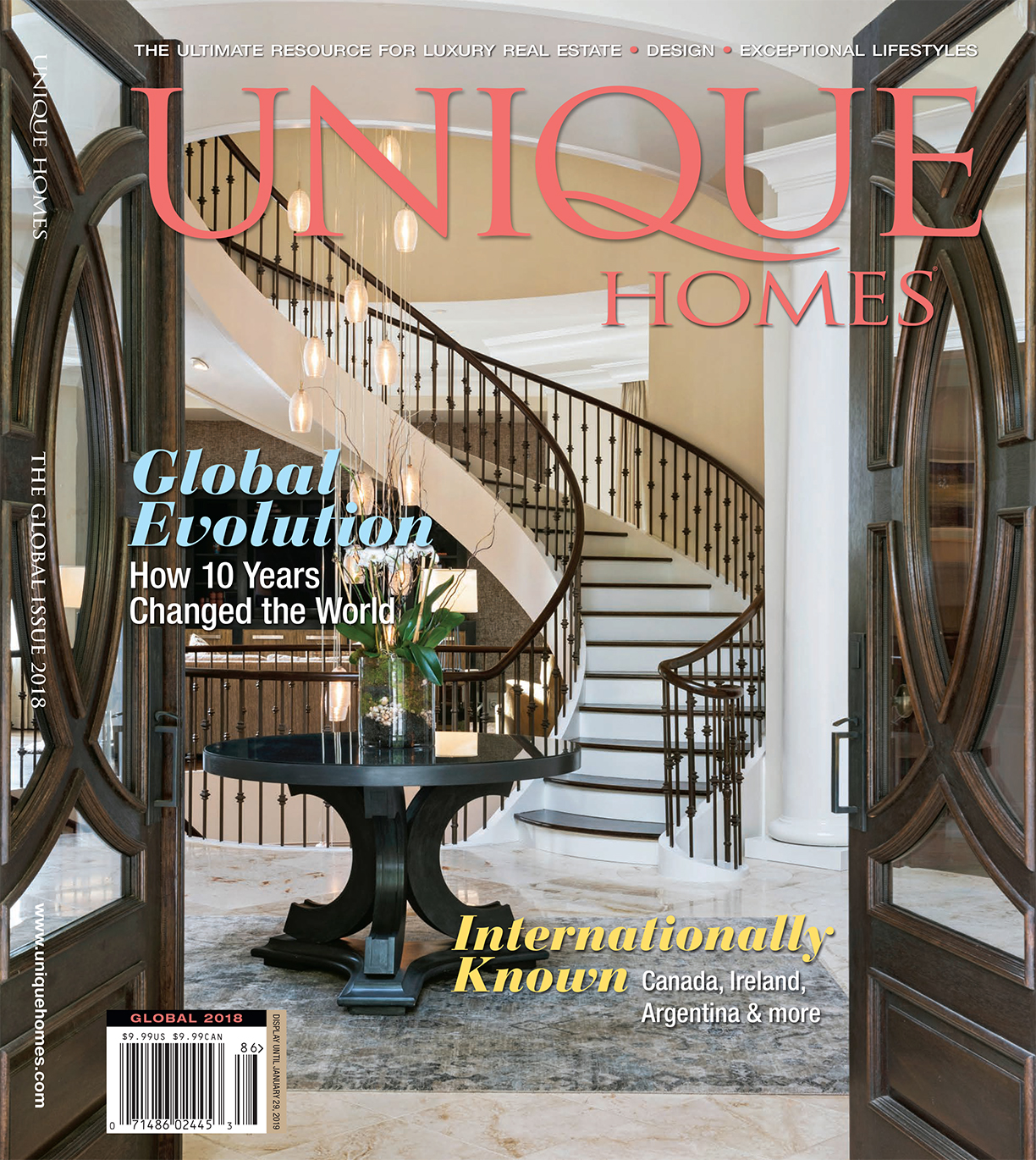
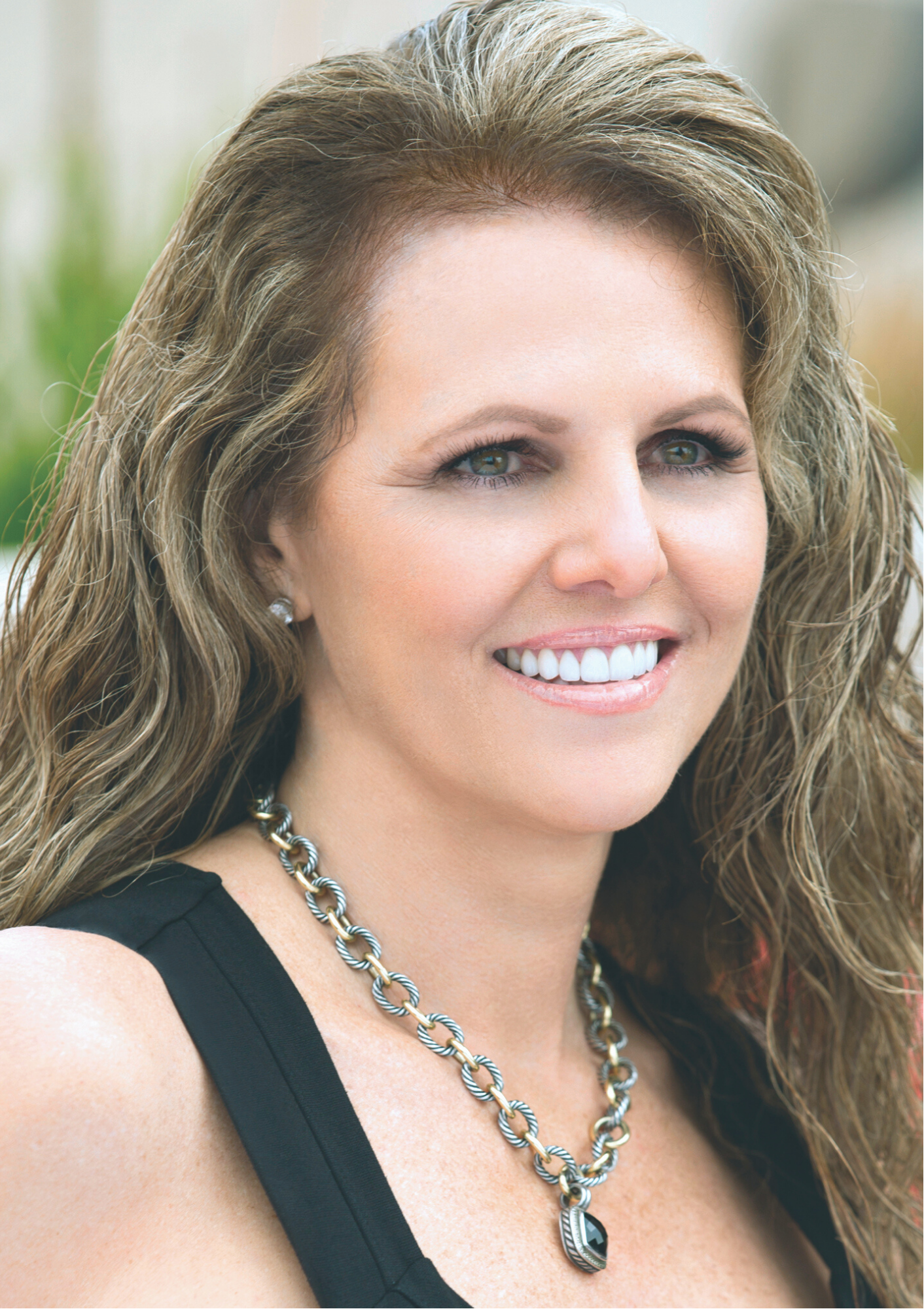
Tracy Allen
Coldwell Banker Pacific Properties
1314 S. King Street, 2nd Floor, Honolulu, HI 96814
Lic#: RS-46610 | T: 808.927.6415
Tracy@CBPacific.com | TracyAllenHawaii.com
Featured Property: 1516 Mokulua Drive, Lanikai Kailua, Hawaii
Coastal Island Retreat… Swim, sun and recharge from your very own oceanfront resort! This sprawling residence situated on a spacious and beautifully manicured parcel offers a large 5-bedroom main home plus, a separate 5 bedroom + den guest house complete with its own private entrance. Meandering tropical pathways lead you to an impressive entry complete with a cascading water feature and Koi pond. Striking open living spaces with soaring ceilings and beautiful rich hardwood details overlook gorgeous turquoise waters and direct Mokulua island views. The sizeable master suite offers dual baths & dressing areas, a private seaside lounge area + an adjacent home gym. The kitchen seamlessly connects to the seaside dining room with outstanding views and is ideal for casual or grand entertaining. This estate is perfect for extended family enjoyment, home office use + every imaginable watersport right at your back door! This is life!
MLS: 202101216
Price: $11,895,000 FS
Main House: 5 bedrooms, 5 full + 2 half bath
Total Areas: 5,867 Sq. Ft.
Cottage: 5 bedrooms + den, 3 full + 1 half bath
Total Areas: 3,082 Sq. Ft.
Main House + Cottage Areas: 8,949 Sq. Ft.
Land Area: 22,314 Sq. Ft.
Linear Ocean Frontage: 75 Linear Ft.
Tracy Allen originally appeared as an Elite agent in the
Unique Homes Spring ’21: Elite edition. See her other
listings here.
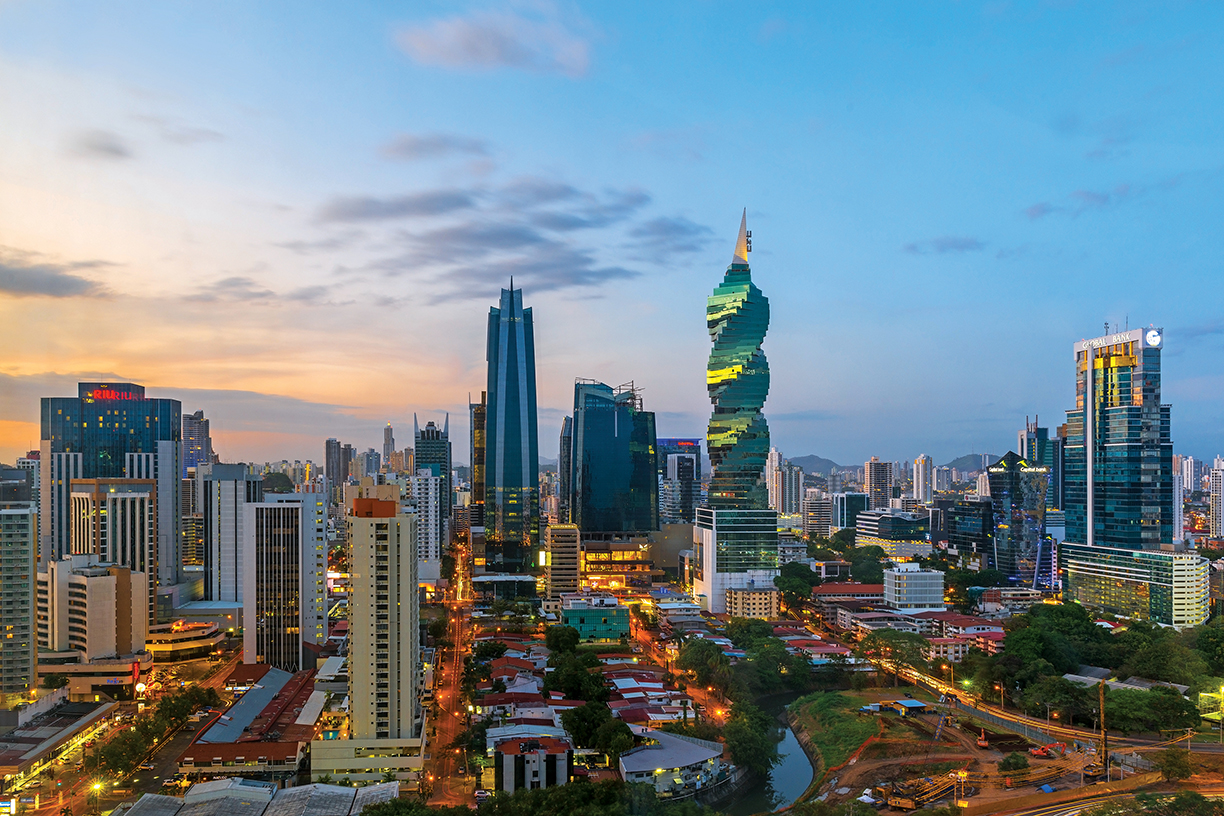
©istockphoto.com / SL_Photography
From tropical escapes to spectacular biodiversity and marine life, Panama has great appeal to buyers interested in luxury real estate.
Stephanie Villarreal, President and Realtor of Your Panama Real Estate Connection, says that one of the most unique aspects of the country is in their very name — connection. “Panama is very connected … amongst others, Panama City’s Tocumen International Airport is known as the ‘Hub of the Americas,’ making Panama very easy to get to,” she says. The connection also extends into a selling point, especially for American buyers, as Panama uses the U.S. dollar as its currency, unlike other Central and South American countries.
Panama’s accessibility via air and sea helps to deepen its connections internationally. Because of this, according to Villarreal, the country’s diversity is far reaching, as many Americans, Canadians, Europeans and others have chosen Panama as their preferred retirement destination, or have purchased real estate and live either part-time or full-time in the country. A recent real estate trend in Panama also includes more international buyers, particularly from mainland China. “There are many well-known multinational corporations with regional headquarters in Panama City as well as embassies of many countries,” Villarreal notes.
Luckily for interested buyers, there is plenty of inventory in a range of property options. Villarreal and her brokerage work with listings in many regional areas with different unique characteristics, from highland properties and waterfront listings to island living options. Elegant Panama City apartments in luxury residential buildings are especially appealing, created by reputable architects and builders into “property masterpieces.”
These masterpieces continue to grow in number and variety. For example, the exclusive Santa Maria development in Panama City is being further developed — it boasts an 18-hole Nicklaus-design golf course, and the city’s historic district, Casco Viejo, is a UNESCO World Heritage Site. Villarreal also mentions that there are several unique private island options with modern conveniences, including state-of-the-art marinas.
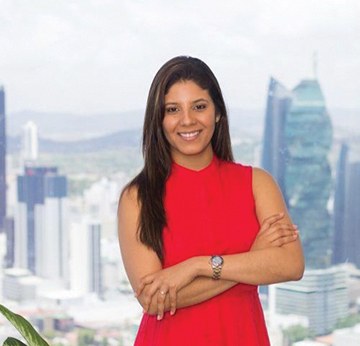
Panama
Stephanie Villarreal
President, Realtor
Your Panama Real Estate Connection
888.899.0019
info@yourpanamaconnection.com
Page 31
THIS ARTICLE ORIGINALLY APPEARED IN THE GLOBAL 2019 ISSUE OF UNIQUE HOMES. TO SEE THE DIGITAL VERSION OF THIS STORY, CLICK HERE.
In the 10 years since the recession, residential real estate, especially in the realm of higher-priced properties, has morphed into a worldwide enterprise.
“There is no question; people have more of a global mindset. They are looking for real estate in places they love,” says Stephanie Anton, president, Luxury Portfolio International, which several years ago adopted the tagline, “We’re global. We’re local.” The phrase aptly characterizes the status of luxury today.
“The saying goes that all real estate is local, but that does not mean that all buyers are,” said NAR President Elizabeth Mendenhall, CEO of RE/MAX Boone Realty in Columbia, Missouri.
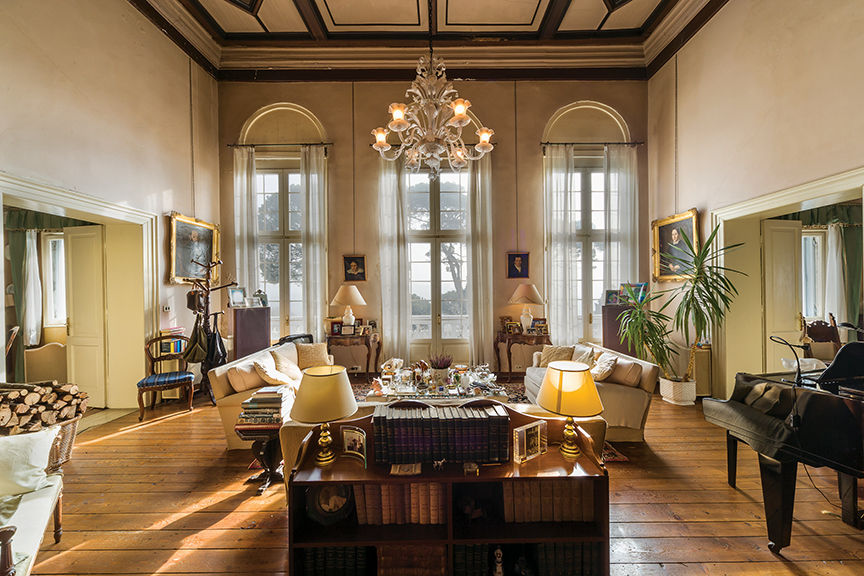
Congeliano, Italy
Photo courtesy of Atlante Properties Luxury Portfolio International®
For the industry, the ramifications of globalization extend beyond merely who buys what, where. “Historically, real estate market dynamics were considered a local phenomenon. In the luxury sector, this is no longer the case, as the value drivers for prime property in one corner of the globe increasingly originate from a completely different region of the world,” explained Christie’s International Real Estate in its 2018 report Luxury Defined, noting this trend is most evident in secondary markets — second home and resort lifestyle destinations. In 2017, sales of resort and vacation homes grew by 19 percent compared to 7 percent in 2016.
Buying property outside of one’s home country is nothing new, but, until the 1980s, sales across borders were generally limited to resort enclaves or a pied à terre in Paris, London or New York, along with the occasional trophy property.
Today, rather than a specific location, high-end buyers are likely to search for a particular property type. “Buyers these days are looking in multiple markets. They’re not as geographically contained. So, if they’re looking for a ski chalet, they could be looking at a number of different countries and throughout the Rocky Mountains in the United States,” shares Laura Brady, president and founder of Concierge Auctions, who says her company initially saw indications of this trend with ranch properties, which are very unique. “Clients don’t care specifically which market they’re in; instead, they want the right property.” Founded 10 years ago, Concierge Auctions has a team in Europe and activity in 18 countries.
Perhaps it’s geography, but Americans typically first look within their own borders. On the other hand, Bob Hurwitz, founder and CEO of the Hurwitz James Company, says, “Wealthy foreign buyers are far more likely to be open minded about locations outside their country as their first choice, in my experience. It’s not difficult to understand if you travel a great deal. In many of the countries I visit on business, you will not find many Americans, but you will meet a wide variety of citizens of other countries.”
More than property and search preferences drive the shift toward a global perspective. “There are several factors contributing to the increased globalization of luxury real estate,” shares Anthony Hitt, president and CEO, Engel & Völkers Americas, who cites the rise of digital, social and mobile technologies. “Real estate is not immune to the changing patterns of consumption enabled by technology; clients have more visibility, and therefore interest, into international homes and listings.”
Experts also point to an increasingly global economy, changing work/life balance and how commonplace travel, for both work and pleasure, has become. Craig Hogan, vice president of luxury, Coldwell Banker Real Estate, plans to exchange his primary residence in Chicago for two small condos, one on Michigan Avenue and another in Puerto Vallarta. “Fifteen years ago, my partner and I never would have considered that. Today, we are mobile. Our careers take us all over the world.”
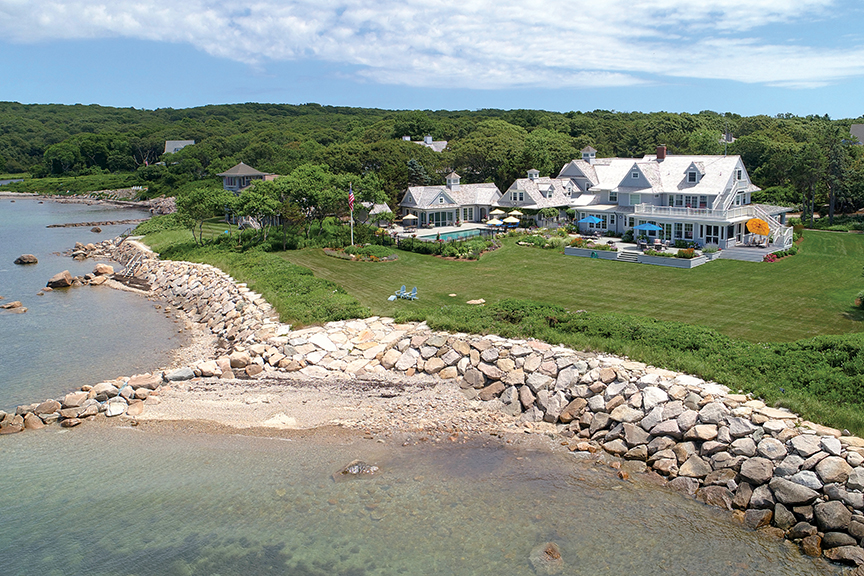
Falmouth, Massachussetts
Photo courtesy of Robert Paul Properties/Luxury Portfolio International®
“With the world that we live in now, it’s less important that you live where your business is or where you do business. So, you’ve got a lot of people just making lifestyle choices. They’re just picking the city that they enjoy the most, and they’re moving there,” shares Mike Leipart, managing partner of The Agency Development Group in Beverly Hills.
Post-Recession Roots
The foundation for today’s international dynamic lies in the early post-recession years. In 2007 and 2008, prices on average fell by approximately 17 percent across the globe. By 2009, 73 percent of the prime property locations surveyed by Knight Frank had experienced declines, and savvy buyers scoured high-end markets worldwide for bargains. At the same time, a growing uptick in wealth and wealth creation brought more buyers to the international market.
Wealth creation continues at the post recession pace, with the number of millionaires worldwide tallying at 22.3 million, according to Wealth X. Those with a net worth between $1 million and $5 million hold 40 percent of the global millionaire wealth, while the remainder is held by the ultra wealthy, those with a net worth in excess of $30 million (Knight Frank pegs the benchmark for ultra wealth at $50 million). From 2012 to 2017, Knight Frank says the number of ultra-high-net-worth (UHNW) individuals increased by 18 percent, followed by another 10 percent gain in 2017.
Coldwell Banker Global Luxury estimates 32 million millionaires reside in the U.S. The U.S. remained the dominant nation for wealth in 2017, both among millionaires and the ultra-wealthy, according to Wealth X, although growth of this population and net worth in the U.S. was the lowest among the seven top-ranked countries. Japan was second with an 11-percent rise in the UHNW population, followed by China, Germany, the U.K. and Hong Kong.
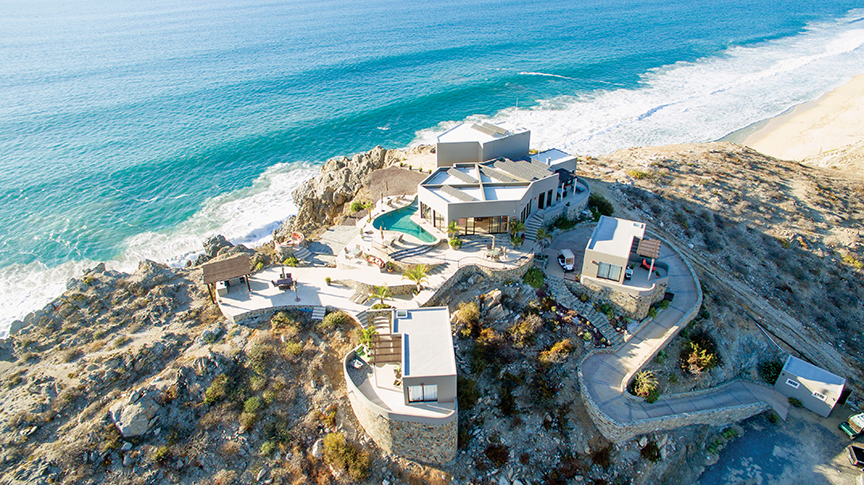
Mexico
Photo courtesy of REMexico Real Estate/Luxury Portfolio International®
Globally, wealth in 2017 increased in all regions, with both Latin America and Europe showing a resurgence over 2016. “The confidence of foreign buyers is back,” says David Scheffler, president, Engel & Völkers France. “The Parisian luxury market has always attracted wealthy Middle Eastern buyers and continues to do so. Qatari, Kuwaiti, Saudi and Omani clients are looking for outstanding apartments and townhouses, the so called hôtel particulier. The trend to buy luxury properties in Paris is not just reserved for the ultra-wealthy, but applies instead to a wider range of affluent buyers. Some might look for a small 50- or 60-square-meter pied-à-terre, while others look for ‘representative’ apartments in the Haussmann style, up to 12 million euro.”
Over the course of the last 8 to 10 years, cross-boarder buying surged, ramped back, and picked up again. In 2016, global sales of luxury properties retrenched, partially in response to Brexit, government restrictions on wealth and the transfer of money. Markets bounced back in 2017, with sales of $1 million-plus properties up substantially.
Christie’s reports an 11-percent increase in sales, the best annual increase since 2014. Luxury properties sold in 190 days, indicating more realistic pricing in some markets and lack of inventory in others. Exceptions included New York and Miami, which saw an influx of new inventory and a shift in buyer interest. In Toronto and Vancouver, newly introduced cooling measures from the government slowed sales.
“I don’t think there is any indication that they [international buyers] are NOT looking in Manhattan. The indication is that they are either interested in the properties at lower numbers or they prefer to wait the market out and hope to buy when things are at a bottom (I have seen this many times before. It never works!). Nobody is moving to Detroit because they can’t find what they want in New York City,” shares Frederick Warburg Peters, CEO of Warburg Realty. “Russians and Europeans are far scarcer than they were in 2010 or 2011.”
Still, both for high-net-worth and ultra-high-net-worth individuals, New York follows Hong Kong as the best city for prime properties.
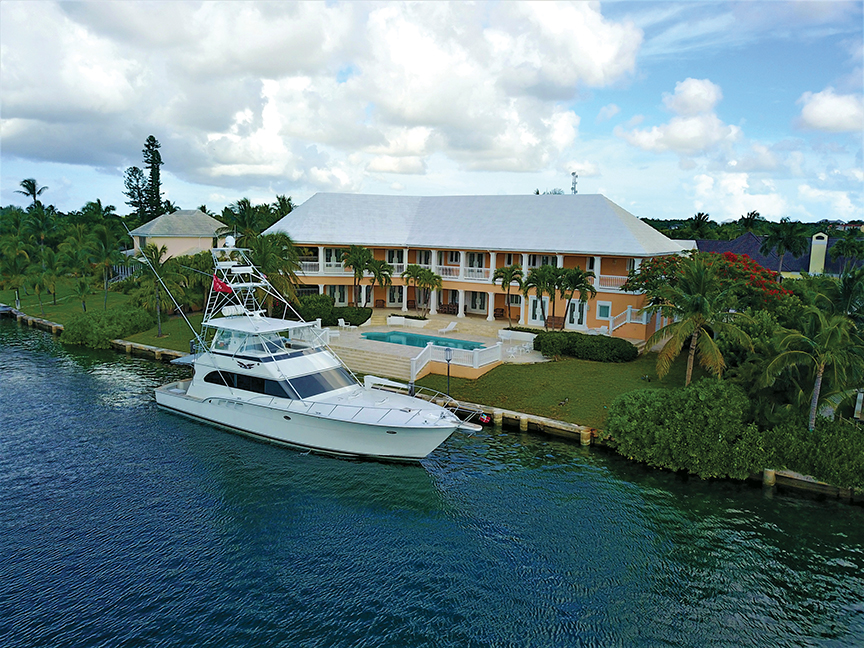
Nassau, Bahamas
Photo courtesy of Bahamas Realty/Luxury Portfolio International®

Toronto, Canada
Photo courtesy of Harvey Kalles/Luxury Portfolio International®
Following the recession, a growing body of research focused on wealth and global cities publish multiple rankings. A city’s position may shift slightly, depending on the research, but all reports include the same top locations for luxury properties. Hong Kong places ahead of New York in Christie’s 2017 index, with New York moving up to second, followed by London, Singapore, San Francisco, Los Angeles, Sydney, Paris, Toronto and Vancouver.
Lower prices pushed Miami just out of the top 10, but the city remains a good example of the change international activity can spark. “The international market has arguably impacted Miami as much or more than any other U.S. market. The influx of capital from Europe, South America, Russia, China and Asia has permanently changed our community. The easiest example is by simply looking at our booming skyline,” says Irving Padron, president and managing broker, Engel & Völkers, Miami.
The highest-priced sale globally was $360 million in Hong Kong, and despite government efforts to curb rising prices, there are no indications of slowing demand for luxury residences here. Also, adding to this market, according to Anton, is continued interest from mainland Chinese buyers.
Numbers Tell the Story
Rather than sales and prices, the best indication of just how global real estate has become can be seen in the expansion of major brands, affiliate groups, and even boutique firms worldwide. “All brands are connected globally,” Hogan observes, adding that even independents need some kind of a global connection. “It’s part of the dynamic,” he says.
Coldwell Banker is in 49 countries. Sotheby’s International Realty network has offices in 72 countries and territories. Luxury Portfolio International and Leading Real Estate Companies of the World lists properties in over 70 countries. Who’s Who in Luxury Real Estate’s network includes 130,000 professionals in over 70 countries. Berkshire Hathaway HomeServices recently opened franchises in Germany and in London. Bob Hurwitz had already positioned his boutique firm as an international player before the recession. Today, he has offices in Los Angeles, San Francisco, New York, London, Shanghai and Singapore.
A global orientation can also be seen in members of the Institute for Luxury Home Marketing. There is “an increased focus and intentional approach as they target international buyers through affiliations with brands, networks and associations,” says general manager Diane Hartley. “In fact,” she says, “we have members in many countries outside of North America who are building relationships and sharing business with our members in the U.S. and Canada.”
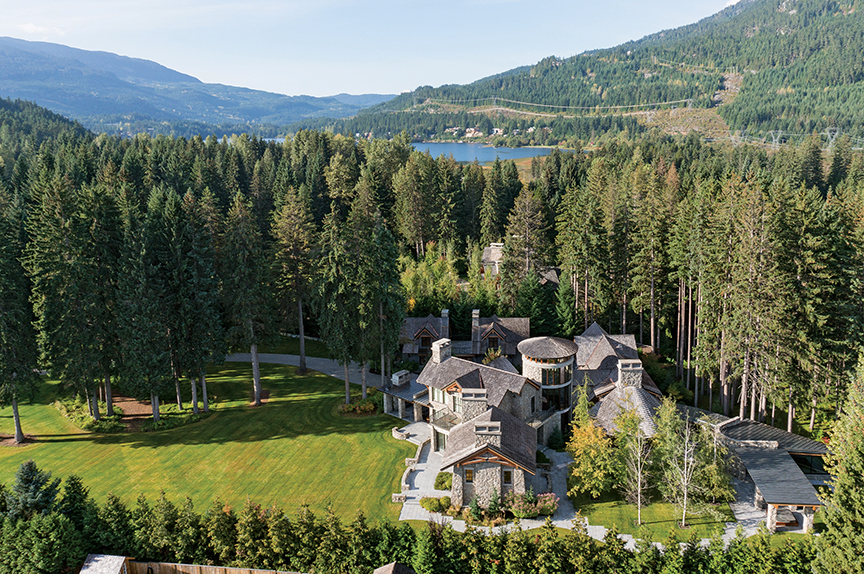
Whistler, Canada
Photo courtesy of The Whistler Real Estate Co./Luxury Portfolio International
Firms based in Europe also continue to increase their footprint. Founded as a boutique firm in Hamburg, Germany, Engel & Völkers is now in 800 locations in Europe, Asia and the Americas, establishing its first offices in the U.S. in 2007. “We have experienced firsthand the globalization of luxury real estate,” says Hitt.
“For luxury and coastal markets, real estate has absolutely become more global,” shares Leipart. Like a growing number of independent firms, The Agency partners with an international real estate advisory company, Savills, which allows them to sell through 700 offices around the world. Still, he adds, “we are focused on international, kind of connecting the dots around the world as opposed to other cities in the U.S.”
In the luxury world, L.A.’s star continues to rise, and the city in recent years has figured into lists for top global markets. According to the National Association of Realtors, Florida, California and Texas remain the top three destinations for purchases from foreign buyers, followed by Arizona and New York. Still, just under half of all residential transactions for foreign buyers took place in other states. Among buyers, China, Canada, India, Mexico and the United Kingdom account for the most purchases.
Also, Hogan points out, international buyers in the U.S. aren’t always in luxury markets. For example, Asians love to buy real estate close to a university. Another group looks for locations with smaller downtowns. Still others want a large home with a big yard near a lake or river, something hard to find in their home country.
As Much As Things Change
Even though foreign buying in the U.S. slowed in 2017 compared to prior years and to overall activity worldwide, international buyers still have their sights on the U.S. “It’s all about consumer confidence. As long as people feel that the U.S. economy is in good shape and it’s going in the right direction, they’ll buy real estate,” says Brian Losh, chairman of Who’s Who in Luxury Real Estate.
Connections to local markets remain essential. “I will say a lot of it still happens in a very traditional way. People are either coming to L.A. a lot, either they have a child in school here, or they love the area and they decide to buy a home, and they do that through a local Realtor, regardless of where they come from,” observes Leipart.
TV Producer Rachael Jerahian plans to visit all 50 U.S. states along with every sovereign nation, and that is just the beginning.
Regardless of sex or financial status, Rachael Jerahian wants everyone to overcome their inhibitions and, “embrace exploration:” desire to tour the world and expand horizons without fear of being alone. Being alone is what initially gave Jerahian the strength to begin her travels, and she hasn’t looked back since. “Overcoming tragedy is something everyone faces,” said Jerahian. “Perhaps, it’s because to experience great highs, we have to know how to conquer terrifying lows.”


Acclaimed producer, Jerahian recently announced her intention to complete the first all-inclusive world travel expedition in history. She began her quest in June, and now plans to stop in all 50 U.S. states, travel to each of the 195 sovereign countries of the world, climb each of the seven continents’ highest peaks, and ski the last degree in both the North and South Poles, all while giving back to the many lives she encounters along her way.

Jerahian, though no stranger to traveling, is embarking on this trip knowing it is to be the most significant one of her life thus far. After suffering the loss of both her parents to cancer by age 30, Jerahian now embraces the cliche to, “live life to the fullest,” and vows not to let life pass her by. Her path across the globe is her way of doing so. Yearning to be a reporter, Jerahian’s story begins in New York City, where she tried her hand in broadcast, until she finally fell in love with production behind the scenes. She now works as a prominent TV producer for multiple networks, including CNN, Food Network, Travel, Discovery, Viceland, PBS, Spike and A&E. After losing her mother to cancer in 2014, Jerahian and her sister planned a trip to clear their minds to Mexico. Jerahian caught the travel bug, returning to the states just to plan out a list of where to go next.
Her global expedition begins in the U.S., in which she plans to drive to all 50 U.S. states, and admits on her blog that this was easier planned than executed. “So… as I began the (daunting) process of mapping out the driving route of the lower 48 states, it quickly became apparent just how difficult this trip was going to be. I knew this would be A LOT of driving for one thing!” She will first head to Alaska, then to her hometown of Los Angeles, then the rest of the states starting in July 2018 and ending tentatively in February 2019. Traveling outside the country comes next, with the first stops being the Middle East and Africa for Jerahian. This leg of the journey is to start in early 2019, according to her blog. When Jerahian will tackle the seven summits and the North and South Pole are still to be decided.

American chefs appreciate French tradition, but are increasingly inspired by ethnic communities in their own backyards.
By Roger Grody
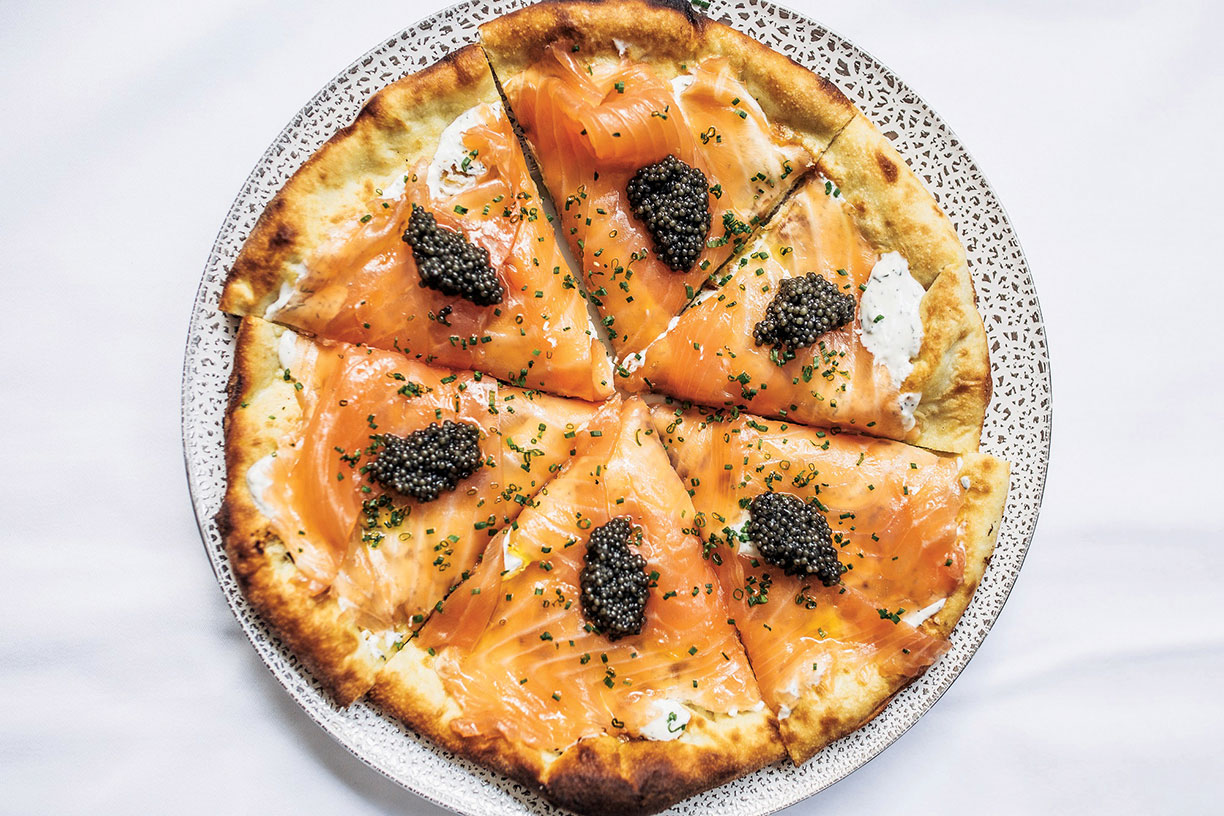
Photo courtesy Antonio Diaz
There was a time when young chefs in America were primarily influenced by French masters like Paul Bocuse or Joël Robuchon. While classic technique remains important, eclectic global flavors have become equally influential. Conveniently, chefs no longer need to travel the world to discover exotic fare, because it is simmering in the diverse ethnic neighborhoods of most American cities.
The practice of incorporating ethnic elements into familiar dishes used to be referred to as “fusion,” a term that has fallen out of favor with contemporary chefs, and today’s cross-cultural combinations are more nuanced and less frivolous than in the 1980s. Today, chefs tend to use local ethnic cuisines as accents or pay tribute to their own families’ immigrant roots. The presence of Middle Eastern falafel on a French menu or a dusting of Japanese togarashi seasoning on potatoes at an all-American steakhouse does not compromise the integrity of their respective cuisines, but certainly makes them more interesting.
A master of infusing local ethnic flavors into his dishes is celebrity chef José Andrés, who borrows Latin American and Asian elements at The Bazaar by José Andrés in Los Angeles. In multicultural Miami, he incorporates Caribbean elements into his menu at The Bazaar South Beach. Given his own Spanish heritage, incredible versatility and expertise with complex molecular gastronomy techniques, most Andrés menus feature some unusual culinary mashups.
At South Beach, Andrés honors the local Cuban community with colada Cubana, a play on Cuban coffee turbocharged with foie gras, and pollo al ajillo (garlic chicken) slow-cooked with black garlic. As a tribute to South Florida’s Jewish community — largely comprised of transplanted New Yorkers — the chef offers a clever riff on bagels and lox: dill cream cheese-filled bagel cones topped with salmon roe. And for dessert, Andrés playfully deconstructs another local specialty, Key lime pie.
Bazaar South Beach chef de cuisine Tito Vargas, a native of Puerto Rico, says he and Andrés draw inspiration from a wide variety of Latin American and Caribbean cultures. “It’s important that I keep true to José’s vision, showcasing the main ingredient and transforming it without sacrificing the flavor and integrity of the product,” he says. Vargas notes that even when applying high-tech culinary tricks, the essence of a dish is respected and preserved. “In no way, shape or form does it look like a Cuban sandwich, but when you bite into it you get all the flavors that compose a Cuban sandwich in a more fun, inventive way,” says the chef of The Bazaar’s molecular gastronomic version.
Despite Los Angeles’ reputation as a bland, immense swath of suburbia, its location — on both the Pacific Rim and threshold to Latin America — ensures diverse ethnic communities that constantly fuel the imagination of local chefs. In L.A., where California Cuisine has morphed into a more global fare, crossing culinary borders is almost routine. At Wolfgang Puck’s celebrity-favored Spago in Beverly Hills, for instance, the menu includes elements from nearly a dozen cuisines.
Bryant Ng was trained in classic French cuisine — he cooked with celebrated chef Daniel Boulud in New York — but at his own restaurant, Cassia in Santa Monica, California, he cooks French brasserie fare with an ethnic twist. At first glance, Cassia’s menu looks like it was borrowed from a Parisian brasserie, but the young chef tweaks traditional dishes with accents from his father’s Singaporean roots and his wife’s Vietnamese heritage.
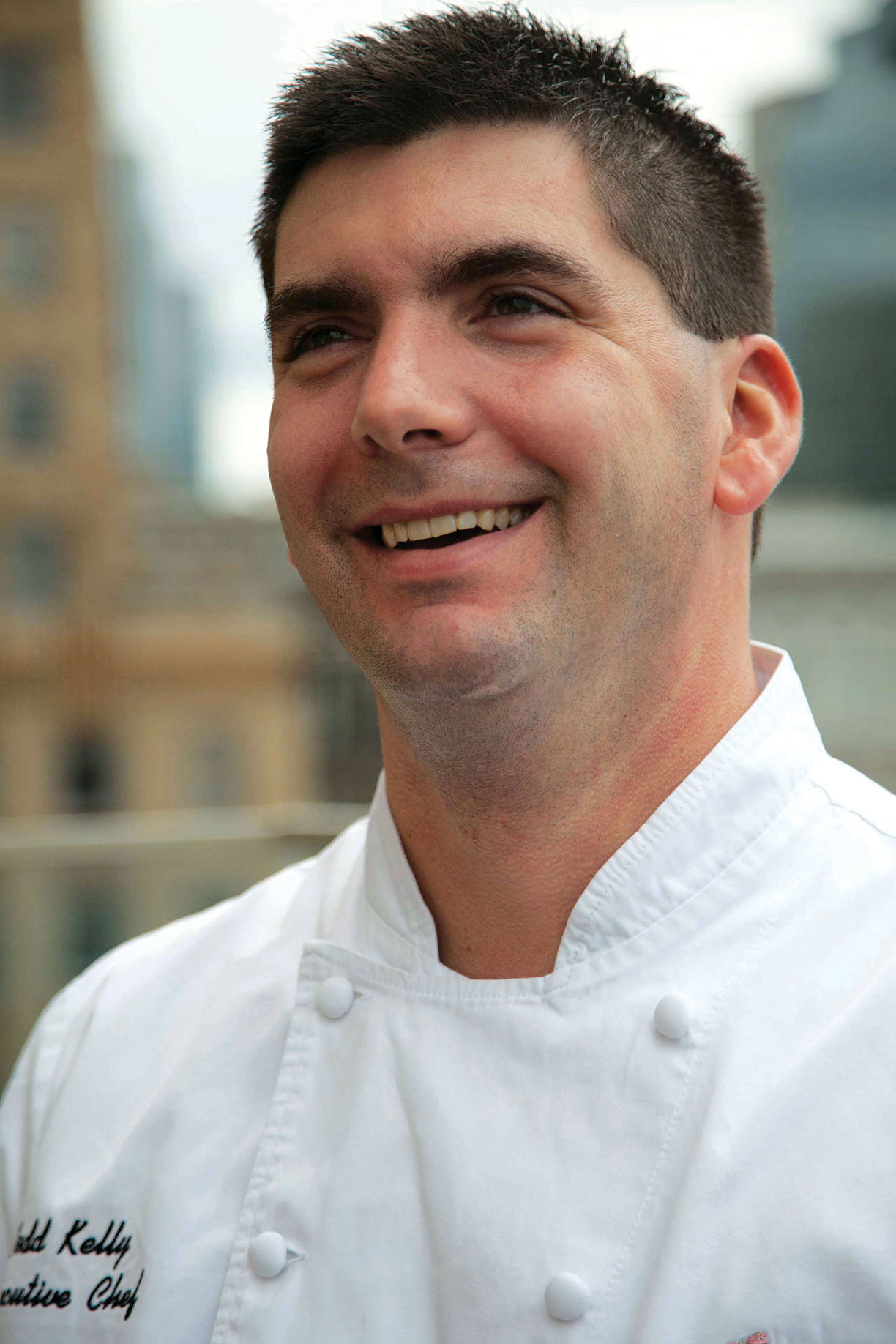
Todd Kelly

Bryant Nig
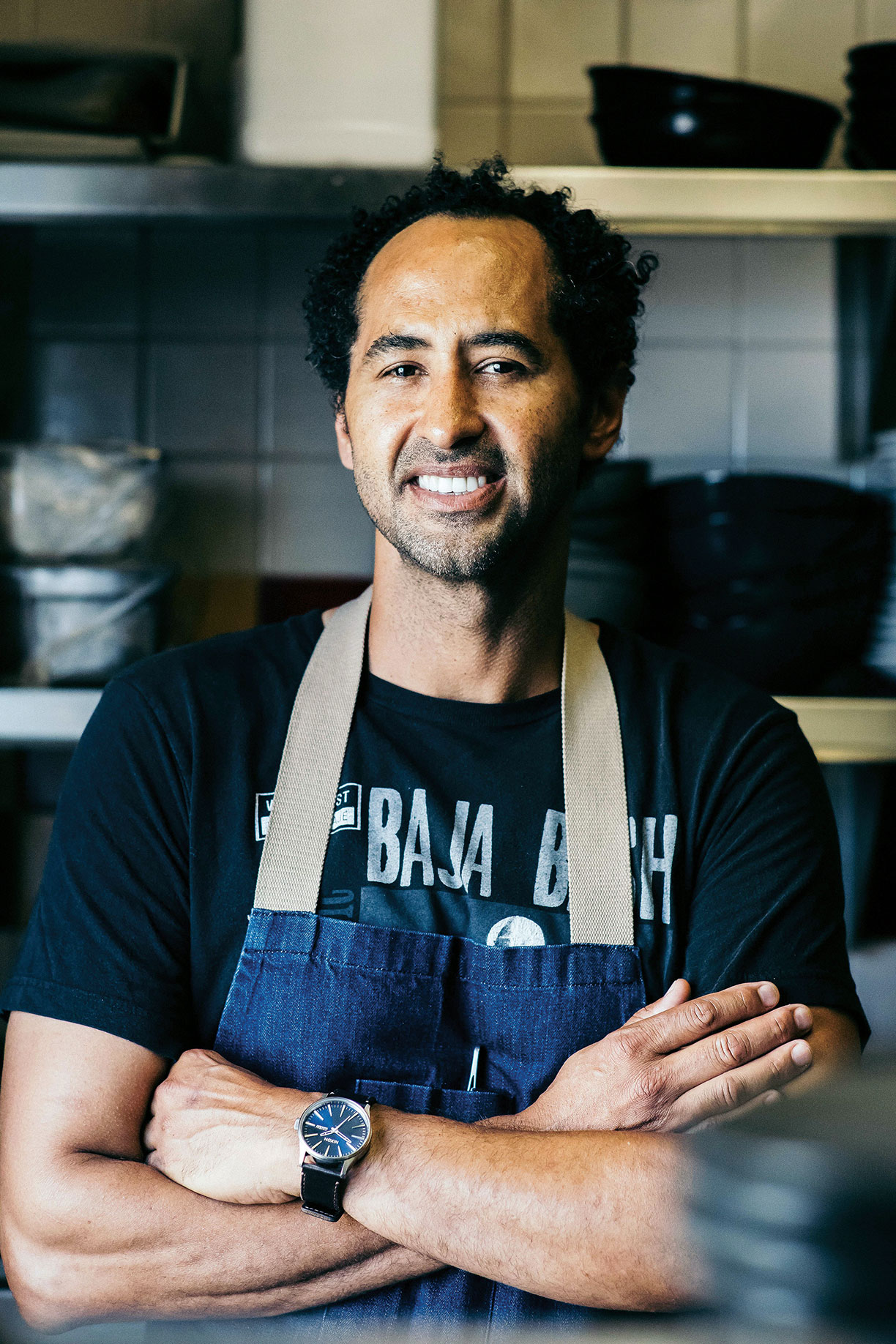
Jason Nibb
Ng’s charcuterie platter includes items like Singaporean candied pork and Vietnamese meatloaf, while escargots are scented with lemongrass. Cassia’s take on the French comfort dish of pot-au-feu has a pho-inspired broth and the bistro staple of steak frites is bathed in a Phú Quôc Island peppercorn sauce. Kaya toast, a signature of Singapore’s street vendors, is not likely to be found in a 14th arrondissement brasserie, but is a specialty at Cassia.
“It’s a very personal menu because it combines the food of my heritage, but also has influences from my professional experiences,” explains Ng. “Understanding the ‘soul’ of a cuisine is the greatest challenge,” says the chef, who dismisses the practice of simply adding a single indigenous ingredient. “Trying to incorporate multiple culinary influences requires a lot of self-editing and discipline,” adds Ng, who believes any composition must respect the referenced cultures.
Anita Lo is one of New York’s most honored chefs and her restaurant Annisa is a reflection of the diverse influences inherent in contemporary American cuisine. A second-generation Chinese-American, Lo’s passion for food can be traced to Paris, where she first fell in love with the art of cooking. She polished her skills in revered French kitchens and classic technique has always been essential to her approach.
At her Manhattan restaurant, those French sensibilities are applied to some ingredients from her own family’s heritage, as well as other global influences discovered in New York’s rich patchwork of ethnic neighborhoods. Since Annisa’s opening in 2000, Chinese dumplings filled with foie gras mousse and jicama have been one of Lo’s signature dishes. A Chinese-French mashup way too cool to be called “fusion,” the dumplings are topped with seared foie gras and a beguiling black vinegar reduction.
At Orchids at Palm Court, an opulent dining room in the Art Deco Hilton Cincinnati Netherland Plaza, executive chef Todd Kelly is contributing to getting the food scene of the Midwest — a region often neglected outside of Chicago — noticed. As a boy, the native New Yorker lived in Mauritius, an island in the Indian Ocean near Madagascar, and that experience, as well as the chef’s naturally curious palate, results in a menu with eclectic influences.
Kelly’s cuisine, built on a solid classical foundation, is laced with intriguing ingredients like Buddha’s hand, lemongrass, paneer, and sudachi. He is adept at making familiar preparations suddenly exciting without excessively altering their essence. For example, a dash of harissa (a spicy North African chili paste) gives a dish of white asparagus with traditional French velouté sauce some zing, while red snapper en papillote, a characteristically South of France preparation, receives an exotic Indian accent with vadouvan curry.
“I like to pull in flavors from my past or things I really crave,” says Kelly, noting that the cultural melting pot of Mauritius and ethnic neighbors on Long Island both contributed to his culinary wanderlust. Recently, the chef has been experimenting with Indian ingredients like nigella, fenugreek and mango powder, insisting they need not distract from the classical roots of a recipe. “The lesson is all about balance and learning that sometimes it’s the simplicity and restraint that controls a dish,” says Kelly.
In La Jolla, San Diego’s chic oceanfront district, executive chef Jason Knibb is known for his molecular gastronomy and globetrotting flavors at Nine-Ten Restaurant & Bar, which celebrates the Golden State’s finest seasonal ingredients. His Jamaican heritage may account for the jerk-seasoned pork belly on the chef’s menu, but his ethnic influences also extend to Latin American, Japanese and Middle Eastern traditions.
“San Diego is a tapestry of rich ethnic diversity, and the local food scene is no exception,” says Knibb. “There are so many chefs who have come to town from other regions bringing their own ethnic influences,” he adds, and makes a point to experience their cuisines firsthand. As a young chef in San Francisco, Knibb lived next door to a quick-service Mediterranean restaurant, and says, “They had some of the best falafels I’ve ever had … I still crave them today.” That unpretentious Mission District eatery was the inspiration for Nine-Ten’s spice-roasted carrots and carrot falafel with harissa yogurt and carrot hummus.
The recently announced James Beard Awards — the Oscars of the restaurant business — reflect a renewed respect for ethnic inspirations. The big winners were Israeli-American chef Michael Solomonov of Philadelphia’s Zahav and Chicago’s Topolobampo, where celebrity chef/restaurateur Rick Bayless is energized by his frequent travels to Mexico.
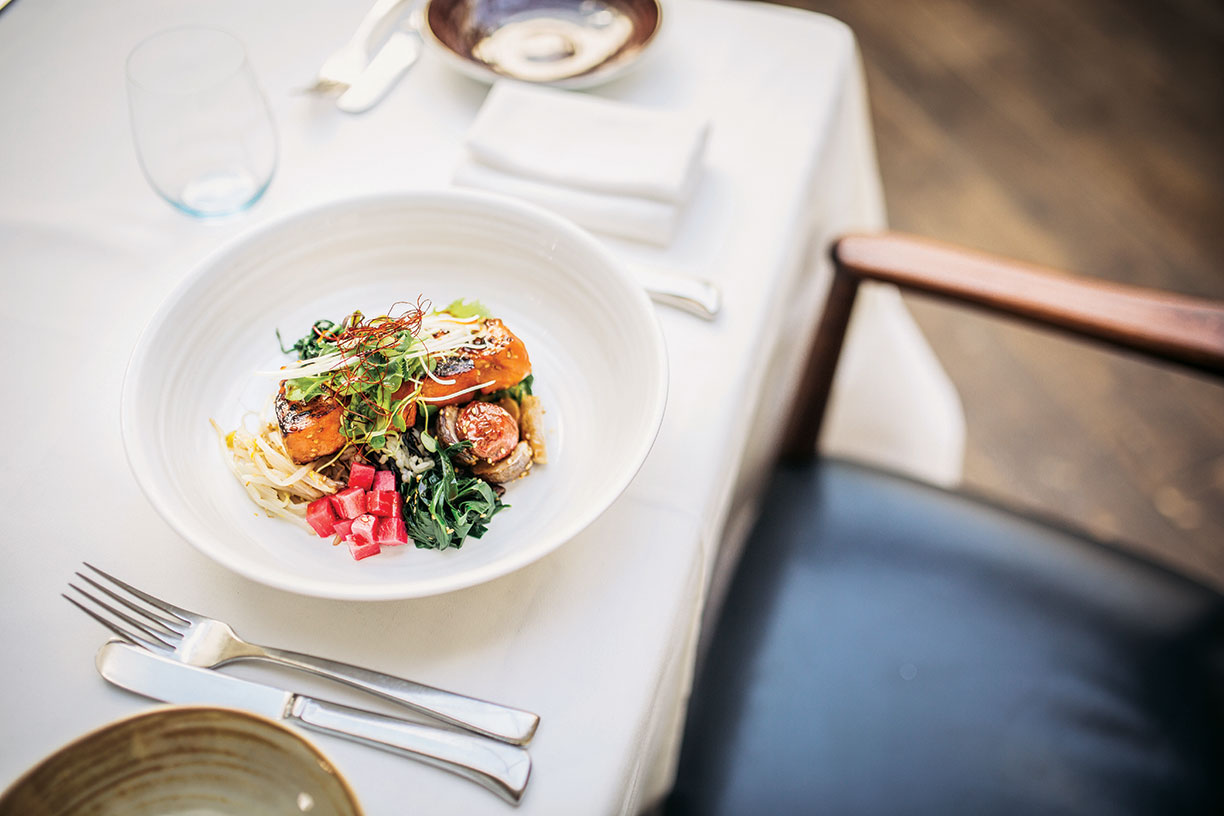
Photo courtesy Antonio Diaz
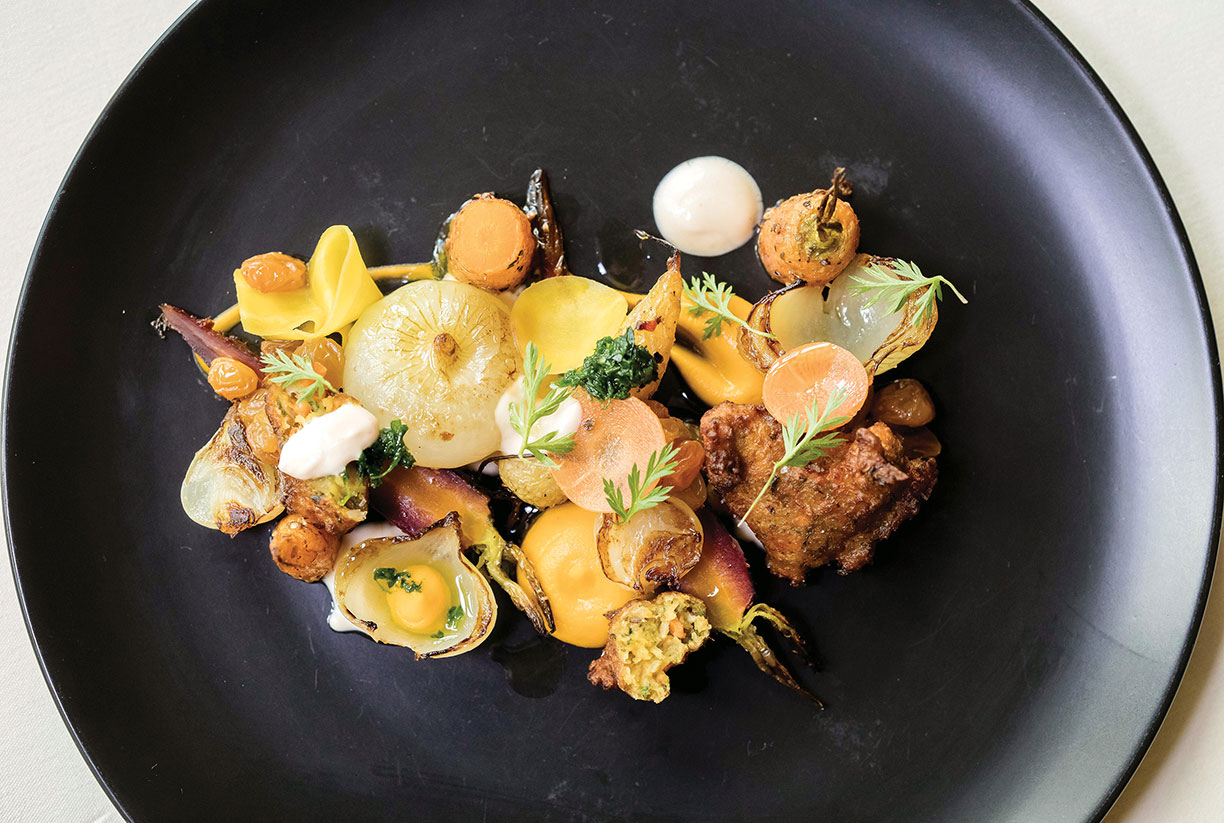
Photo courtesy Jason Knibb
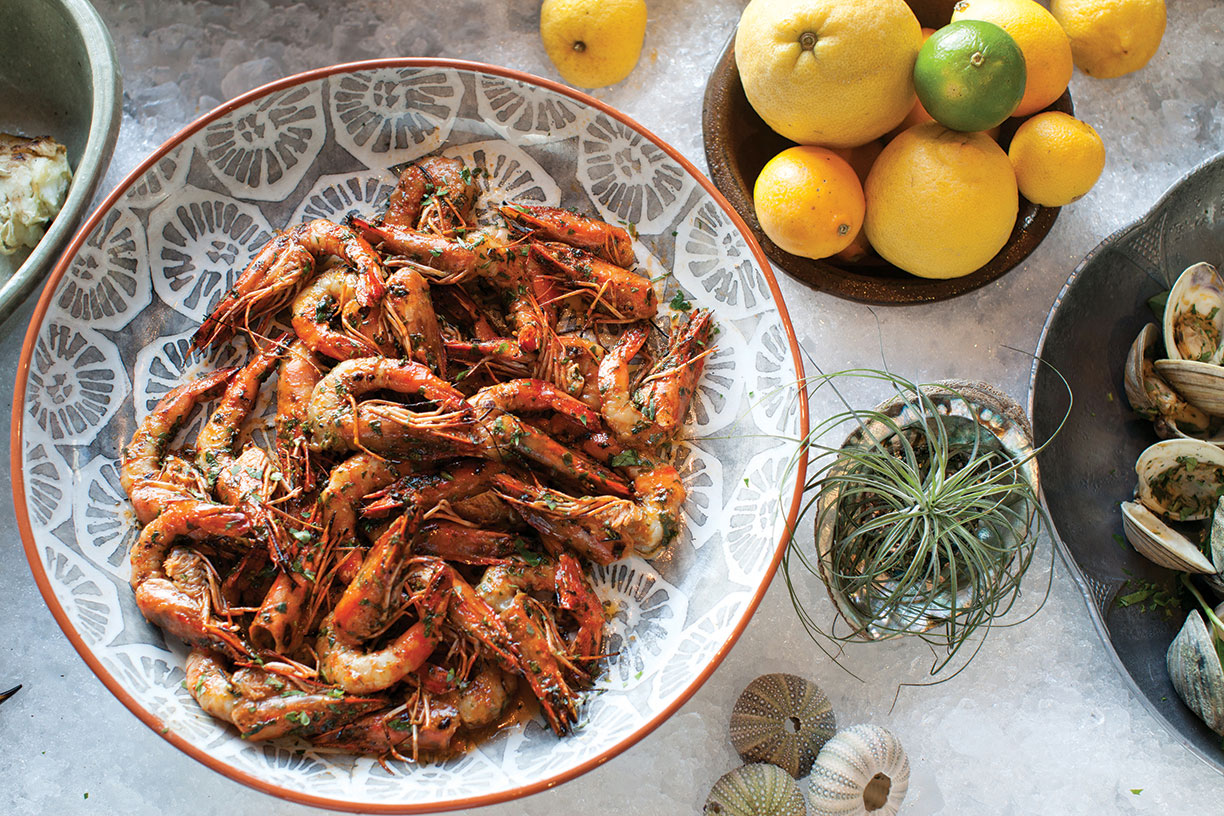
Photo courtesy Rick Poon
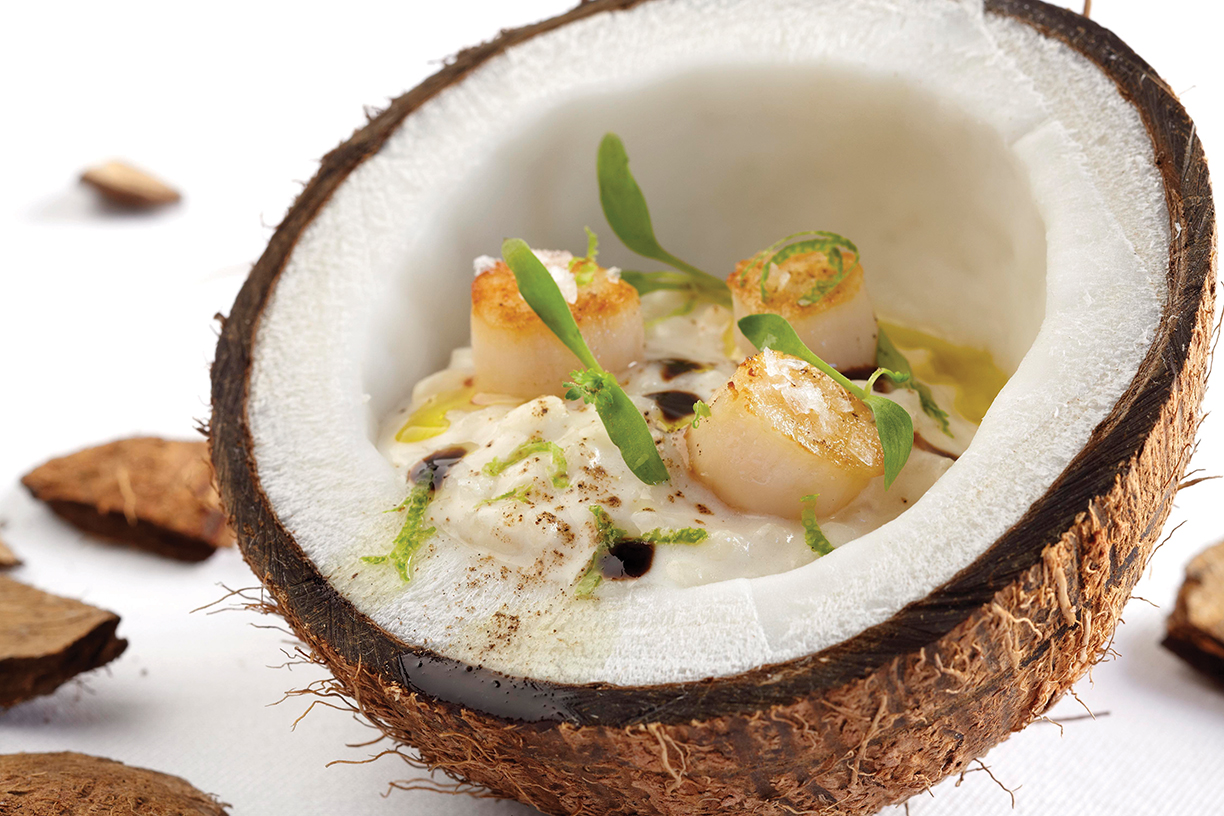
Photo courtesy Greg Powers Photography
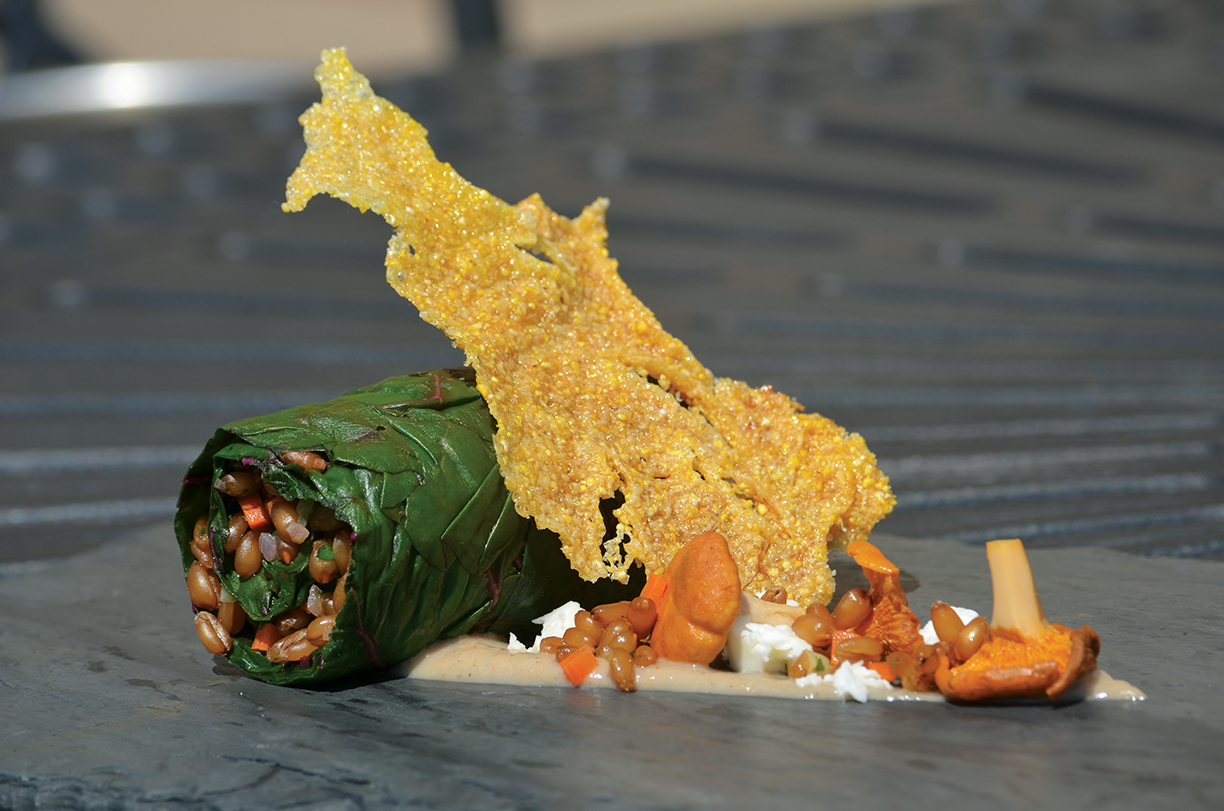
Photo courtesy Todd Kelly
Global Influences
Annisa, New York; www.annisarestaurant.com
The Bazaar by José Andrés, Los Angeles; www.sbe.com
The Bazaar by José Andrés South Beach; www.sbe.com
Cassia, Santa Monica; www.cassiala.com
Orchids at the Palm Court, Cincinnati; www.orchidsatpalmcourt.com
Nine-Ten Restaurant & Bar, San Diego; www.nine-ten.com
Spago, Beverly Hills; www.wolfgangpuck.com
Topolobambpo, Chicago; www.rickbayless.com
Zahav, Philadelphia; www.zahavrestaurant.com



